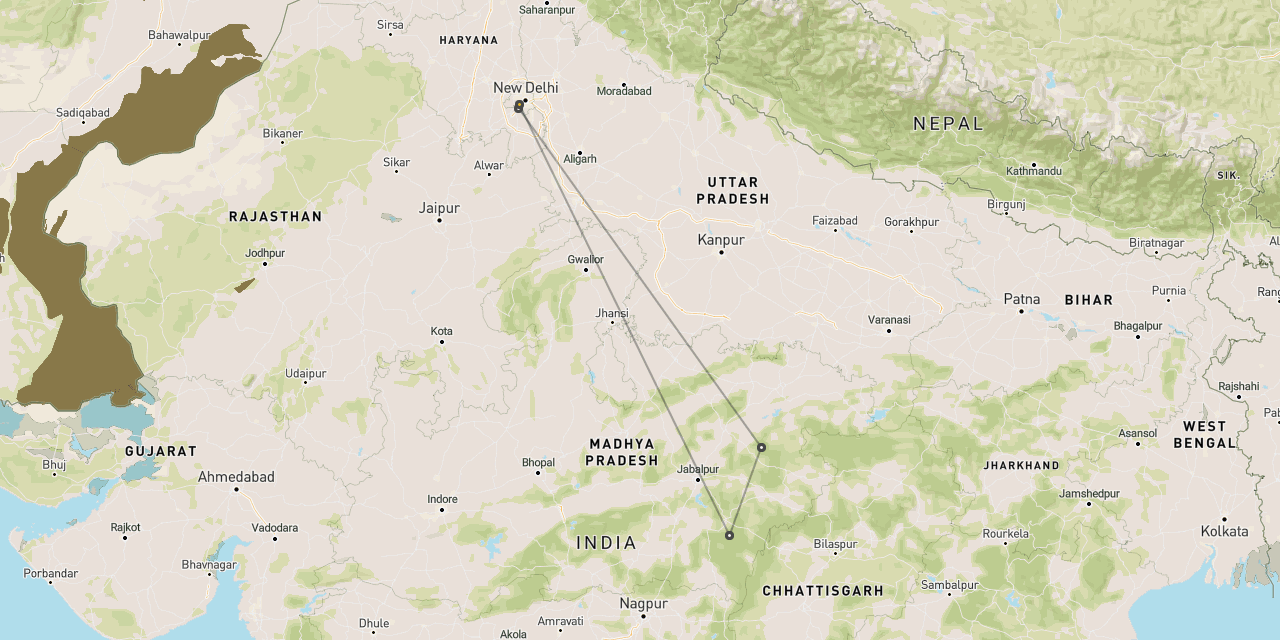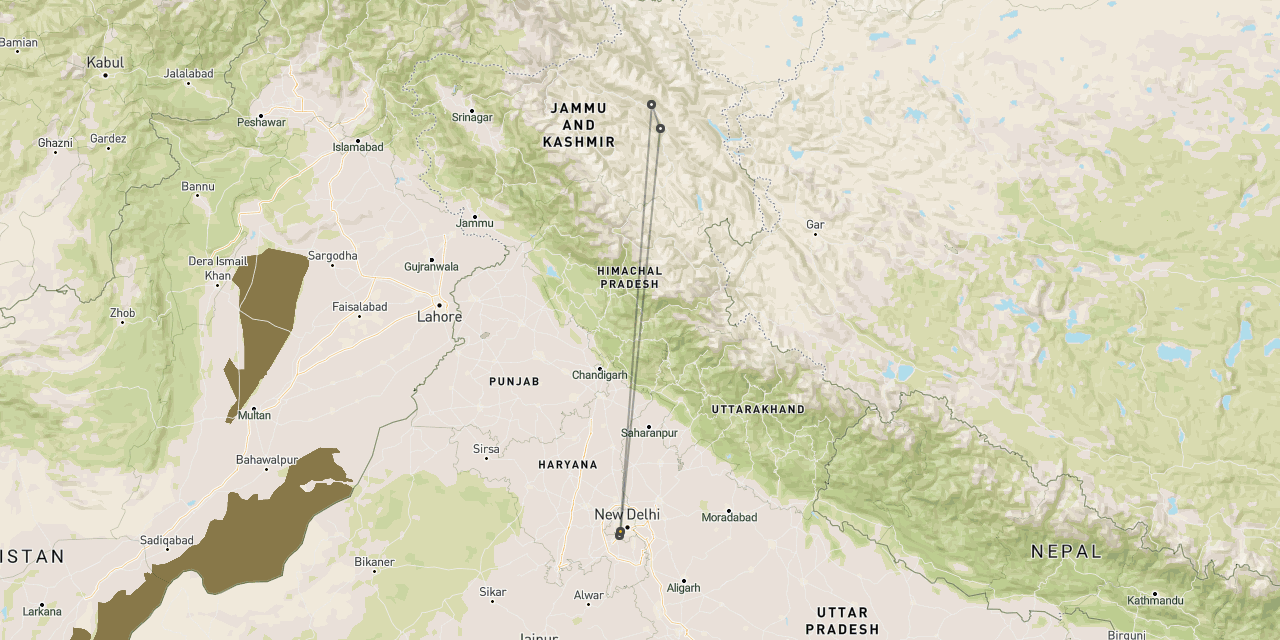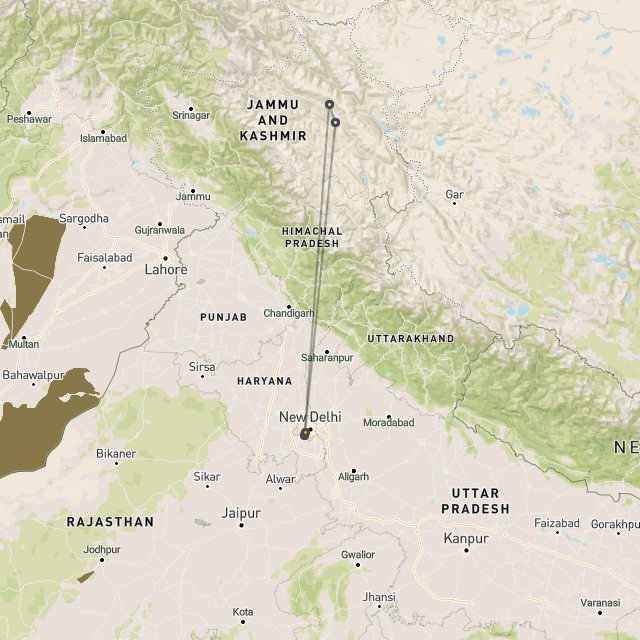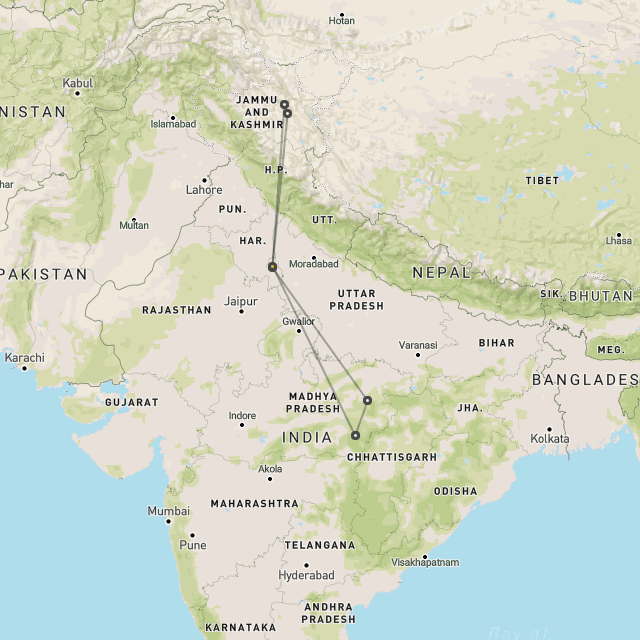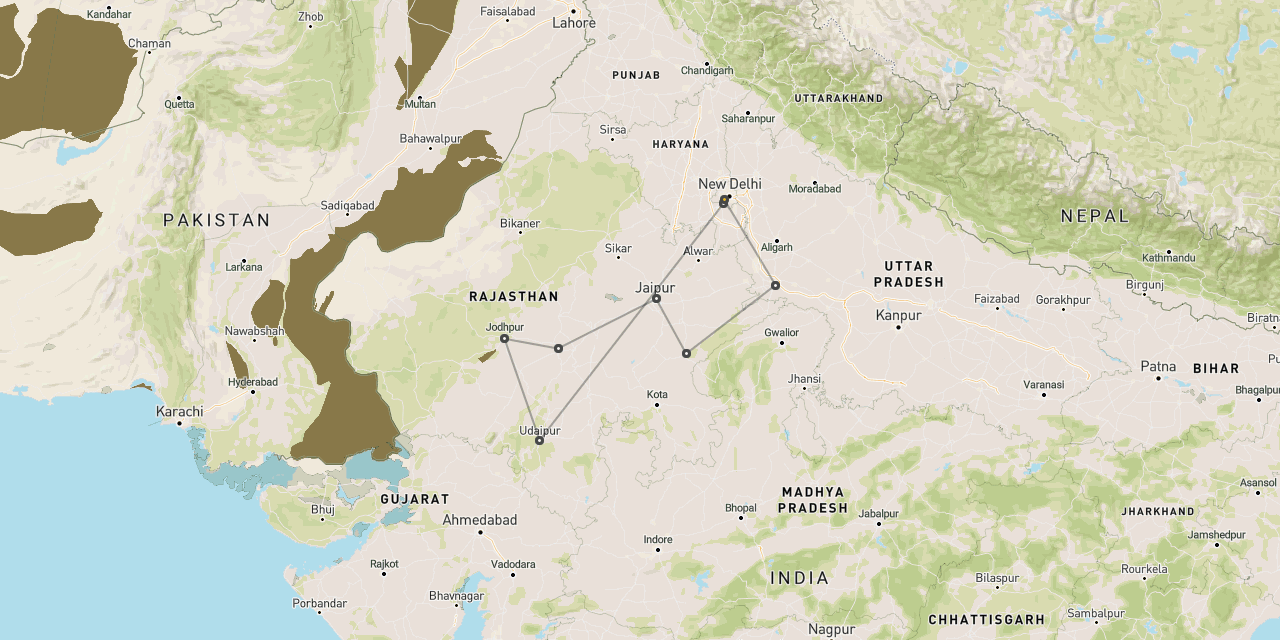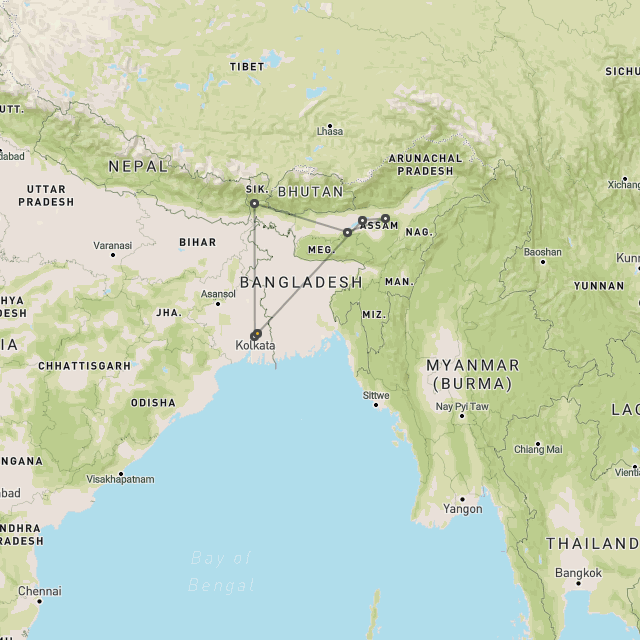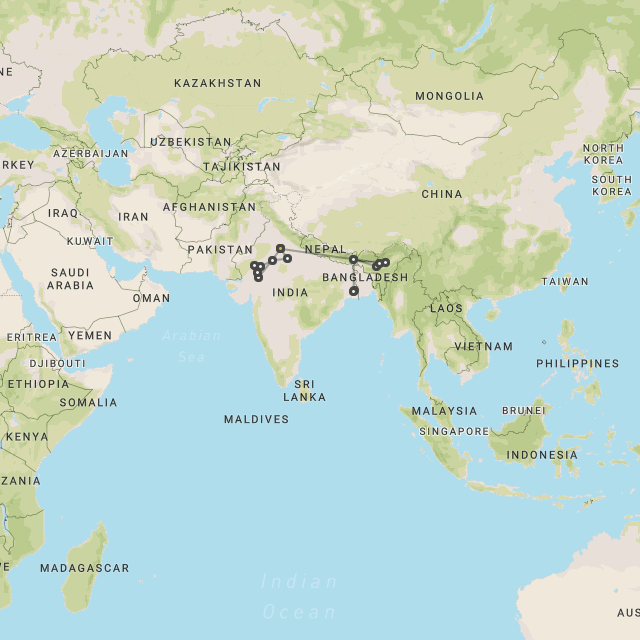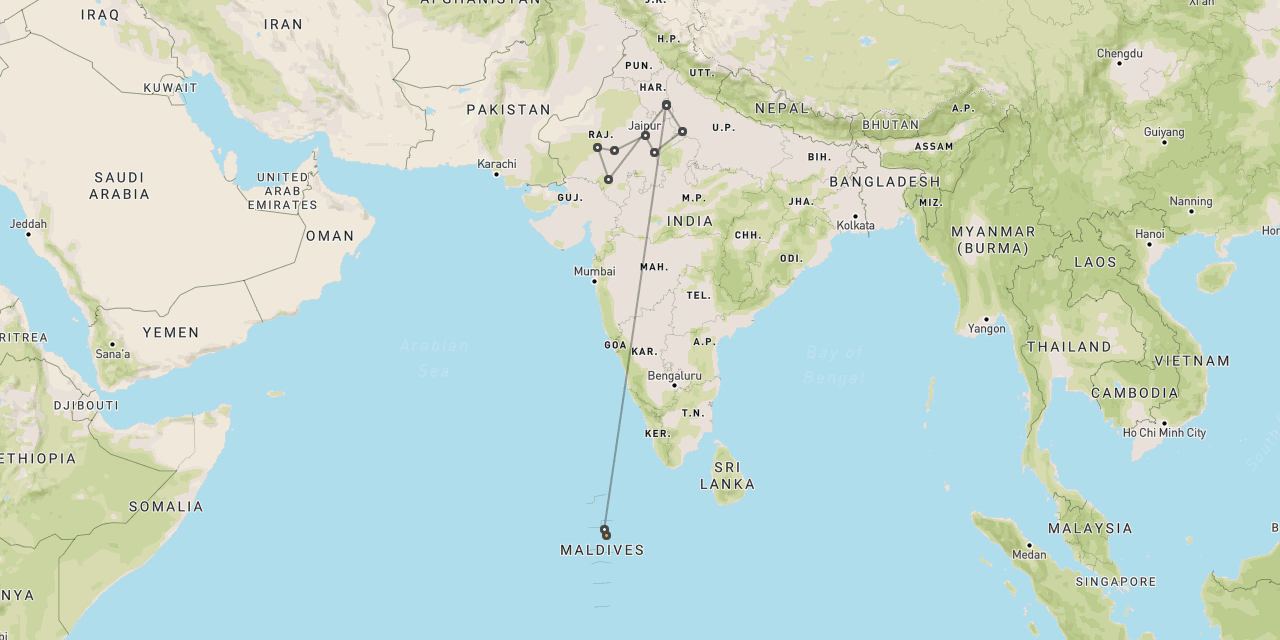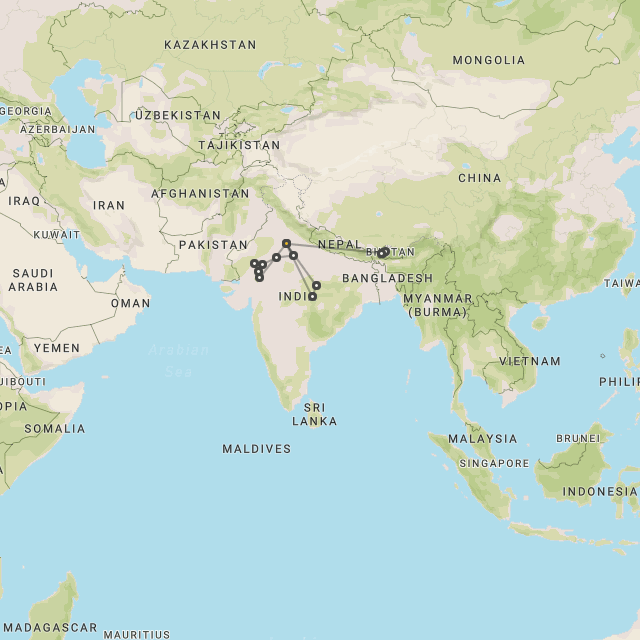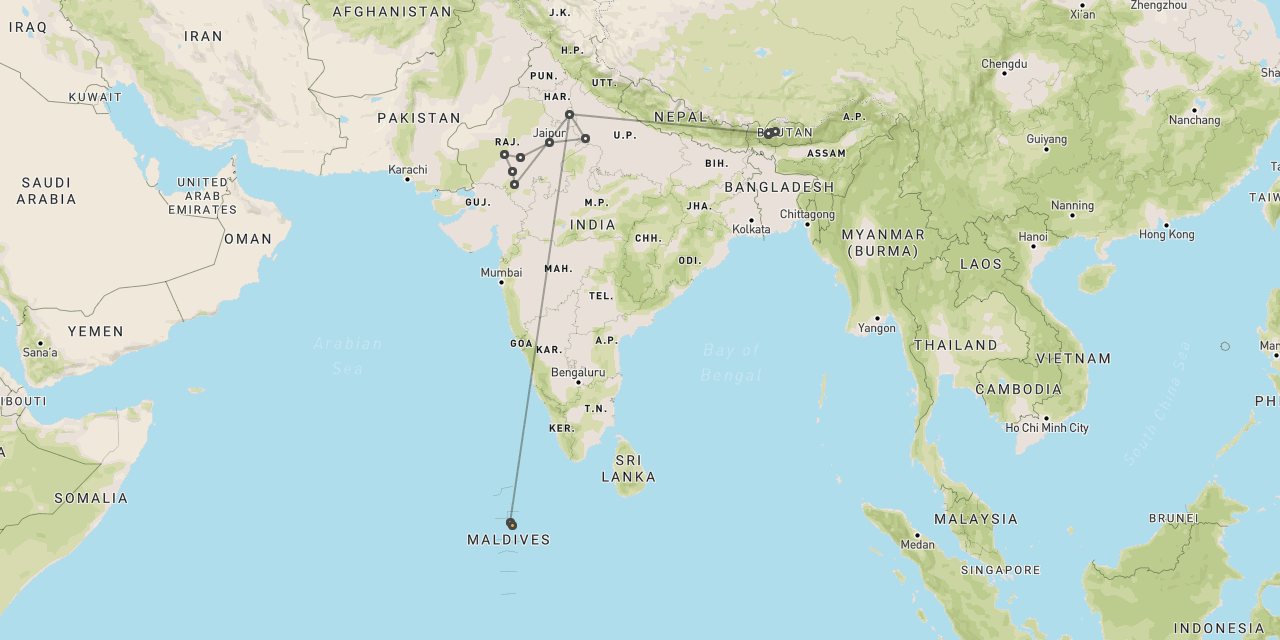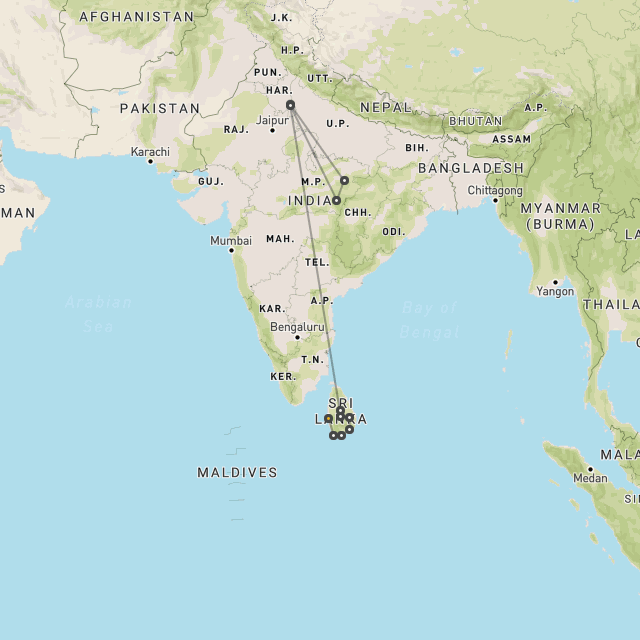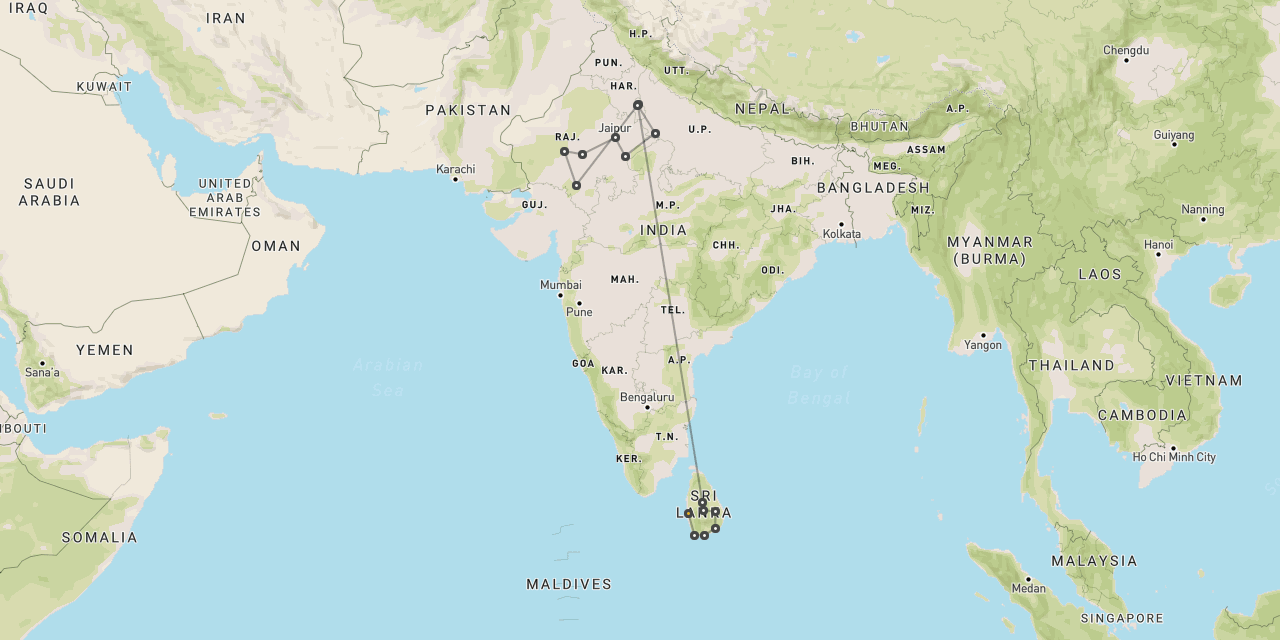
Safari to Sasan Gir
Sasan Gir
is an Asiatic lion stronghold
in northwest India

so much more rare and precious than African lions
Sasan Gir National Park is located in the Gujarat province of northeast India, around 400 km north of Mumbai.
This reserve, which extends over 1153 sq km (445 sq mi), is the only remaining stronghold of the Asiatic lion.
The area was previously the private hunting reserve of the local ruler, the Nawab of Junagarh. During the 1800s it became common practice for the Nawab to curry favour by inviting British dignitaries on lion hunting expeditions into Sasan Gir. By the end of the century it was realised that the number of lions had reduced to perilously low numbers, possibly as few as a dozen or so animals.
Conservation efforts throughout the 1900s have seen periodic rises and falls in lion numbers, but the population now seems to be stabilising at around 500 individuals.
Remarkably, the conservation of these lions has been largely carried out by female volunteers from local Muslim villages, who have taken it upon themselves to work with local people, including semi-nomadic herdsmen that graze their livestock in the buffer zones around the reserve, to diffuse lion-human conflict and prevent the animals from being shot or poisoned. Many of the lions are almost tame in the presence of these female guardians.
There is also a lion breeding program at Sakkarbaug Zoo (around 50 km to the northwest of the reserve), which has managed to export over 100 of these rare and precious cats to other safe havens around the world.
The reserve itself consists of gently undulating terrain, largely covered by dry teak forest. Although there are seven perennial rivers in the area, during the dry season there can be a real shortage of surface water for animals to drink, especially on the eastern side of the reserve) and the park authorities are sometimes obliged to pump a number of waterholes.
The national park is home to around 38 species of mammals, 300 species of birds, 37 species of reptiles and more than 2,000 species of insects.
The carnivores include the Asiatic lions, Indian leopards, jungle cats, striped hyenas, golden jackals, Bengal foxes, Indian gray mongooses, ruddy mongooses and honey badgers. Desert cats and rusty-spotted cats may also be present, but are rarely seen.
The main herbivores are chitals, nilgais, sambars, four-horned antelopes, chinkaras, blackbucks and wild boars.
Among the smaller mammals, porcupines and hares are common, but pangolins are rare.
The reptiles are represented by the mugger crocodile, Indian cobras, tortoises, pythons and monitor lizards.
Bird species include crested serpent eagles, Bonelli’s eagles, changeable hawk-eagles, brown fish owls, Indian eagle-owls, rock bush-quails, Indian peafowls, brown-capped pygmy woodpeckers, black-headed orioles, crested treeswifts and Indian pittas.

Gallery
Map
We absolutely love the idea of combining multiple big cats into a single trip. The ultimate option includes tigers in Madhya Pradesh, snow leopards in Ladakh, leopards in Rajasthan and lions in Sasan Gir. What a combination!
Unfortunately Sasan Gir has not really opened up properly for visitors. Unlike the situation in Africa, where sustainable tourism is seen as the primary driving force for conservation, here the authorities seem to view tourism as an environmental threat and actively discourage it.
However, Sasan Gir remains a mission to get to, so you really need to want it badly. We usually fly in from Delhi, Jodhpur or Mumbai, often with at least one transit night on the way through.
Where to stay
There is a cluster of lodges outside the southwest gate into the reserve, a couple of which are really rather good.
lions, tigers and leopards in a single trip
let us know your thoughts about India
and we will help you create the perfect trip

Extraordinary tailor-made adventures,
from earthy and edgy to easy and extravagant
From around USD 2500 per person, you set the ceiling
Sample Trips
Here are some of our popular trip shapes

Get started on your trip
It’s never too soon to get in touch, we are here to help with every stage of your planning.
Best Lodges
We regularly inspect and photograph all of the the best lodges, to ensure that we always recommend the most suitable options
Key Locations
Take a look around related locations. Click ‘View more’ to explore locations further afield.















